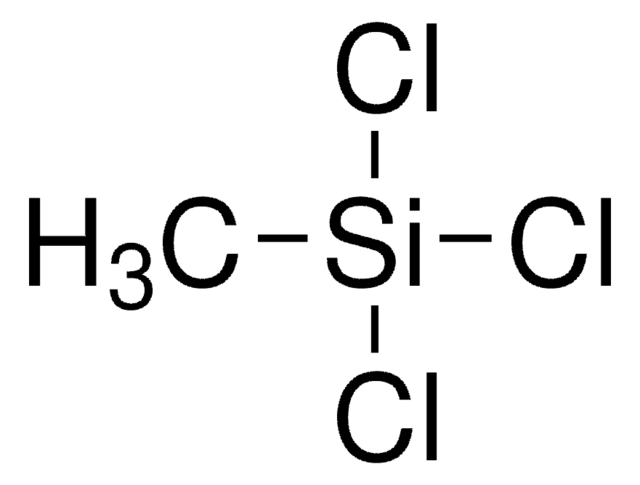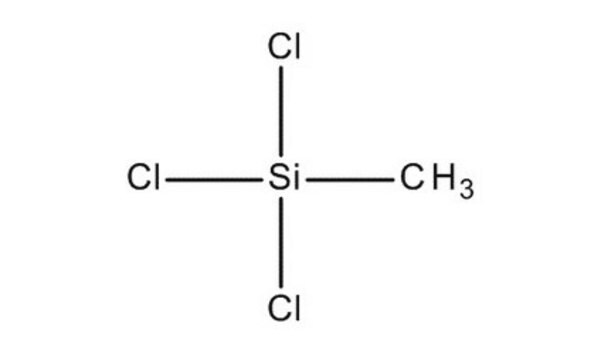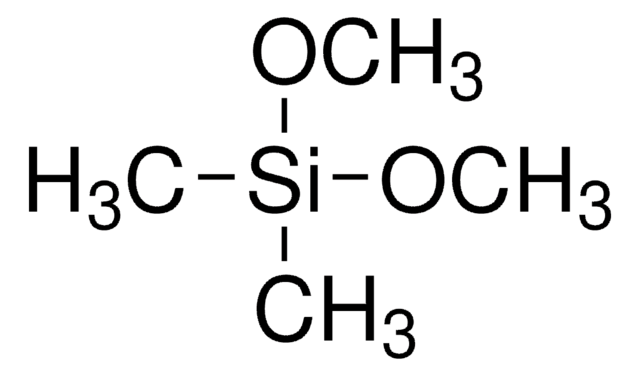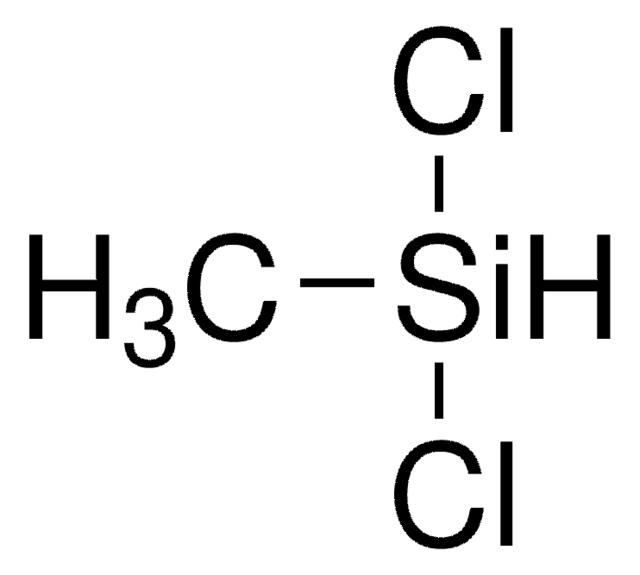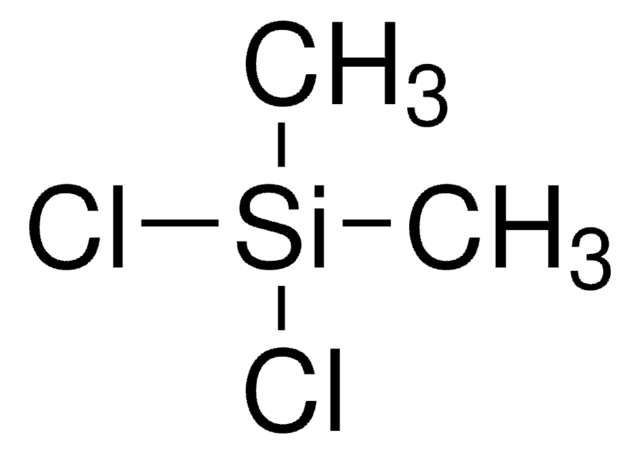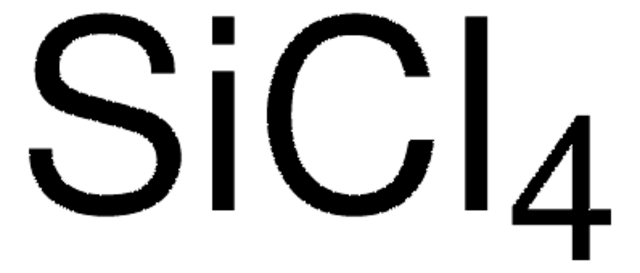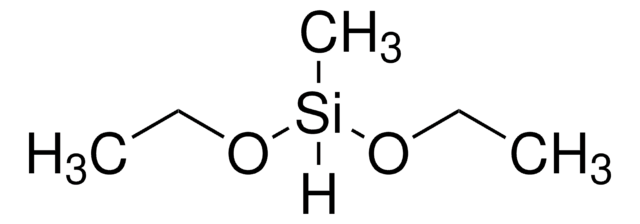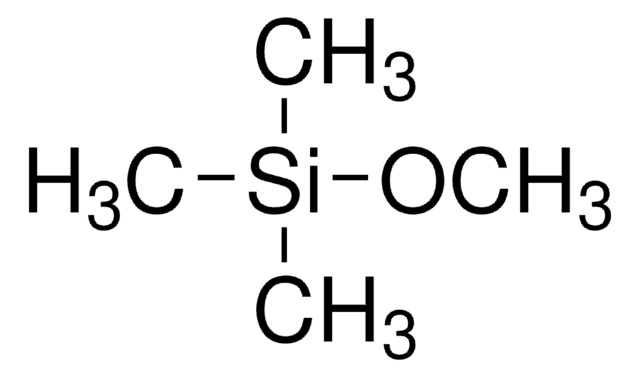679208
Methyltrichlorosilane
deposition grade, ≥98% (GC), ≥99.99% (as metals)
Sinónimos:
Trichloro(methyl)silane
About This Item
Productos recomendados
grado
deposition grade
Nivel de calidad
densidad de vapor
5.2 (vs air)
presión de vapor
150 mmHg ( 25 °C)
Ensayo
≥98% (GC)
≥99.99% (as metals)
Formulario
liquid
temp. de autoignición
>760 °F
lim. expl.
11.9 %
índice de refracción
n20/D 1.411 (lit.)
bp
66 °C (lit.)
densidad
1.273 g/mL at 25 °C (lit.)
cadena SMILES
C[Si](Cl)(Cl)Cl
InChI
1S/CH3Cl3Si/c1-5(2,3)4/h1H3
Clave InChI
JLUFWMXJHAVVNN-UHFFFAOYSA-N
¿Está buscando productos similares? Visita Guía de comparación de productos
Palabra de señalización
Danger
Frases de peligro
Clasificaciones de peligro
Acute Tox. 3 Inhalation - Acute Tox. 4 Dermal - Acute Tox. 4 Oral - Eye Dam. 1 - Flam. Liq. 2 - Skin Corr. 1A - STOT SE 3
Órganos de actuación
Respiratory system
Código de clase de almacenamiento
3 - Flammable liquids
Clase de riesgo para el agua (WGK)
WGK 1
Punto de inflamabilidad (°F)
46.4 °F - closed cup
Punto de inflamabilidad (°C)
8 °C - closed cup
Elija entre una de las versiones más recientes:
¿Ya tiene este producto?
Encuentre la documentación para los productos que ha comprado recientemente en la Biblioteca de documentos.
Artículos
Deposition Grade Silanes, fully characterized by chemical analysis and nuclear magnetic resonance (NMR) with greater than 98% purity, for Sol-Gel Processes.
atomic layer deposition (ALD), microelectronics, Mo:Al2O3 films, nanocomposite coating, photovoltaics, semiconductor devices, W:Al2O3 films, composite films, layer-by-layer
Silica is a very popular inorganic nanomaterial used in a wide range of applications including fillers for rubber, catalyst supports, separation media, carriers in food and agriculture, and abrasive/anticaking agents in cosmetics. It is also widely believed to be an important material for biomedical applications for following reasons.
Nuestro equipo de científicos tiene experiencia en todas las áreas de investigación: Ciencias de la vida, Ciencia de los materiales, Síntesis química, Cromatografía, Analítica y muchas otras.
Póngase en contacto con el Servicio técnico